- Home
- Jules Verne
Vingt mille lieues sous les mers. English Page 2
Vingt mille lieues sous les mers. English Read online
Page 2
*German: "Bulletin." Ed.
During the first months of the year 1867, the question seemed tobe buried, and it didn't seem due for resurrection, when new factswere brought to the public's attention. But now it was no longeran issue of a scientific problem to be solved, but a quite real andserious danger to be avoided. The question took an entirely new turn.The monster again became an islet, rock, or reef, but a runaway reef,unfixed and elusive.
On March 5, 1867, the Moravian from the Montreal Ocean Co., lyingduring the night in latitude 27 degrees 30' and longitude 72degrees 15', ran its starboard quarter afoul of a rock marked on nocharts of these waterways. Under the combined efforts of wind and400-horsepower steam, it was traveling at a speed of thirteen knots.Without the high quality of its hull, the Moravian would surely havesplit open from this collision and gone down together with those 237passengers it was bringing back from Canada.
This accident happened around five o'clock in the morning, just as day wasbeginning to break. The officers on watch rushed to the craft's stern.They examined the ocean with the most scrupulous care.They saw nothing except a strong eddy breaking three cablelengths out, as if those sheets of water had been violently churned.The site's exact bearings were taken, and the Moravian continued oncourse apparently undamaged. Had it run afoul of an underwater rockor the wreckage of some enormous derelict ship? They were unable to say.But when they examined its undersides in the service yard,they discovered that part of its keel had been smashed.
This occurrence, extremely serious in itself, might perhaps havebeen forgotten like so many others, if three weeks later it hadn'tbeen reenacted under identical conditions. Only, thanks to thenationality of the ship victimized by this new ramming, and thanksto the reputation of the company to which this ship belonged,the event caused an immense uproar.
No one is unaware of the name of that famous English shipowner,Cunard. In 1840 this shrewd industrialist founded a postal servicebetween Liverpool and Halifax, featuring three wooden ships with400-horsepower paddle wheels and a burden of 1,162 metric tons.Eight years later, the company's assets were increased by four650-horsepower ships at 1,820 metric tons, and in two more years,by two other vessels of still greater power and tonnage.In 1853 the Cunard Co., whose mail-carrying charter had just been renewed,successively added to its assets the Arabia, the Persia, the China,the Scotia, the Java, and the Russia, all ships of top speed and,after the Great Eastern, the biggest ever to plow the seas.So in 1867 this company owned twelve ships, eight with paddle wheelsand four with propellers.
If I give these highly condensed details, it is so everyone can fullyunderstand the importance of this maritime transportation company,known the world over for its shrewd management. No transoceanicnavigational undertaking has been conducted with more ability,no business dealings have been crowned with greater success.In twenty-six years Cunard ships have made 2,000 Atlantic crossingswithout so much as a voyage canceled, a delay recorded, a man, a craft,or even a letter lost. Accordingly, despite strong competitionfrom France, passengers still choose the Cunard line in preferenceto all others, as can be seen in a recent survey of official documents.Given this, no one will be astonished at the uproar provoked by thisaccident involving one of its finest steamers.
On April 13, 1867, with a smooth sea and a moderate breeze,the Scotia lay in longitude 15 degrees 12' and latitude 45 degrees37'. It was traveling at a speed of 13.43 knots under the thrustof its 1,000-horsepower engines. Its paddle wheels were churningthe sea with perfect steadiness. It was then drawing 6.7 metersof water and displacing 6,624 cubic meters.
At 4:17 in the afternoon, during a high tea for passengers gatheredin the main lounge, a collision occurred, scarcely noticeableon the whole, affecting the Scotia's hull in that quarter a littleastern of its port paddle wheel.
The Scotia hadn't run afoul of something, it had been fouled,and by a cutting or perforating instrument rather than a blunt one.This encounter seemed so minor that nobody on board would have beendisturbed by it, had it not been for the shouts of crewmen in the hold,who climbed on deck yelling:
"We're sinking! We're sinking!"
At first the passengers were quite frightened, but Captain Andersonhastened to reassure them. In fact, there could be no immediate danger.Divided into seven compartments by watertight bulkheads, the Scotiacould brave any leak with impunity.
Captain Anderson immediately made his way into the hold.He discovered that the fifth compartment had been invaded by the sea,and the speed of this invasion proved that the leak was considerable.Fortunately this compartment didn't contain the boilers,because their furnaces would have been abruptly extinguished.
Captain Anderson called an immediate halt, and one of his sailorsdived down to assess the damage. Within moments they hadlocated a hole two meters in width on the steamer's underside.Such a leak could not be patched, and with its paddle wheelshalf swamped, the Scotia had no choice but to continue its voyage.By then it lay 300 miles from Cape Clear, and after three daysof delay that filled Liverpool with acute anxiety, it enteredthe company docks.
The engineers then proceeded to inspect the Scotia, which hadbeen put in dry dock. They couldn't believe their eyes.Two and a half meters below its waterline, there gapeda symmetrical gash in the shape of an isosceles triangle.This breach in the sheet iron was so perfectly formed, no punchcould have done a cleaner job of it. Consequently, it musthave been produced by a perforating tool of uncommon toughness--plus, after being launched with prodigious power and then piercingfour centimeters of sheet iron, this tool had needed to withdrawitself by a backward motion truly inexplicable.
This was the last straw, and it resulted in arousing public passionsall over again. Indeed, from this moment on, any maritime casualtywithout an established cause was charged to the monster's account.This outrageous animal had to shoulder responsibility for allderelict vessels, whose numbers are unfortunately considerable,since out of those 3,000 ships whose losses are recorded annuallyat the marine insurance bureau, the figure for steam or sailingships supposedly lost with all hands, in the absence of any news,amounts to at least 200!
Now then, justly or unjustly, it was the "monster" who stood accusedof their disappearance; and since, thanks to it, travel betweenthe various continents had become more and more dangerous,the public spoke up and demanded straight out that, at all cost,the seas be purged of this fearsome cetacean.
CHAPTER 2
The Pros and Cons
DURING THE PERIOD in which these developments were occurring,I had returned from a scientific undertaking organized to explorethe Nebraska badlands in the United States. In my capacity asAssistant Professor at the Paris Museum of Natural History, I hadbeen attached to this expedition by the French government.After spending six months in Nebraska, I arrived in New York ladenwith valuable collections near the end of March. My departurefor France was set for early May. In the meantime, then, I was busyclassifying my mineralogical, botanical, and zoological treasureswhen that incident took place with the Scotia.
I was perfectly abreast of this question, which was the big newsof the day, and how could I not have been? I had read and reread everyAmerican and European newspaper without being any farther along.This mystery puzzled me. Finding it impossible to form any views,I drifted from one extreme to the other. Something was out there,that much was certain, and any doubting Thomas was invited to placehis finger on the Scotia's wound.
When I arrived in New York, the question was at the boiling point.The hypothesis of a drifting islet or an elusive reef, put forwardby people not quite in their right minds, was completely eliminated.And indeed, unless this reef had an engine in its belly, how couldit move about with such prodigious speed?
Also discredited was the idea of a floating hull or some otherenormous wreckage, and again because of this speed of movement.
So only two possible solutions to the question were left,creating two very distinct groups of supporters: on one side,those favoring a monste
r of colossal strength; on the other,those favoring an "underwater boat" of tremendous motor power.
Now then, although the latter hypothesis was completely admissible,it couldn't stand up to inquiries conducted in both the New Worldand the Old. That a private individual had such a mechanism at hisdisposal was less than probable. Where and when had he built it,and how could he have built it in secret?
Only some government could own such an engine of destruction,and in these disaster-filled times, when men tax their ingenuity tobuild increasingly powerful aggressive weapons, it was possible that,unknown to the rest of the world, some nation could have been testingsuch a fearsome machine. The Chassepot rifle led to the torpedo,and the torpedo has led to this underwater battering ram,which in turn will lead to the world putting its foot down.At least I hope it will.
But this hypothesis of a war machine collapsed in the face of formaldenials from the various governments. Since the public interestwas at stake and transoceanic travel was suffering, the sincerityof these governments could not be doubted. Besides, how couldthe assembly of this underwater boat have escaped public notice?Keeping a secret under such circumstances would be difficult enoughfor an individual, and certainly impossible for a nation whoseevery move is under constant surveillance by rival powers.
So, after inquiries conducted in England, France, Russia, Prussia,Spain, Italy, America, and even Turkey, the hypothesis of an underwaterMonitor was ultimately rejected.
And so the monster surfaced again, despite the endless witticismsheaped on it by the popular press, and the human imagination soongot caught up in the most ridiculous ichthyological fantasies.
After I arrived in New York, several people did me the honorof consulting me on the phenomenon in question. In France I hadpublished a two-volume work, in quarto, entitled The Mysteriesof the Great Ocean Depths. Well received in scholarly circles,this book had established me as a specialist in this pretty obscure fieldof natural history. My views were in demand. As long as I could denythe reality of the business, I confined myself to a flat "no comment."But soon, pinned to the wall, I had to explain myself straight out.And in this vein, "the honorable Pierre Aronnax, Professor atthe Paris Museum," was summoned by The New York Herald to formulatehis views no matter what.
I complied. Since I could no longer hold my tongue, I let it wag.I discussed the question in its every aspect, both politicaland scientific, and this is an excerpt from the well-padded articleI published in the issue of April 30.
"Therefore," I wrote, "after examining these different hypotheses oneby one, we are forced, every other supposition having been refuted,to accept the existence of an extremely powerful marine animal.
"The deepest parts of the ocean are totally unknown to us.No soundings have been able to reach them. What goes on inthose distant depths? What creatures inhabit, or could inhabit,those regions twelve or fifteen miles beneath the surfaceof the water? What is the constitution of these animals?It's almost beyond conjecture.
"However, the solution to this problem submitted to me can takethe form of a choice between two alternatives.
"Either we know every variety of creature populating our planet,or we do not.
"If we do not know every one of them, if nature still keepsichthyological secrets from us, nothing is more admissible than to acceptthe existence of fish or cetaceans of new species or even new genera,animals with a basically 'cast-iron' constitution that inhabitstrata beyond the reach of our soundings, and which some developmentor other, an urge or a whim if you prefer, can bring to the upperlevel of the ocean for long intervals.
"If, on the other hand, we do know every living species, we mustlook for the animal in question among those marine creaturesalready cataloged, and in this event I would be inclined to acceptthe existence of a giant narwhale.
"The common narwhale, or sea unicorn, often reaches a length ofsixty feet. Increase its dimensions fivefold or even tenfold, then givethis cetacean a strength in proportion to its size while enlargingits offensive weapons, and you have the animal we're looking for.It would have the proportions determined by the officers of the Shannon,the instrument needed to perforate the Scotia, and the powerto pierce a steamer's hull.
"In essence, the narwhale is armed with a sort of ivory sword,or lance, as certain naturalists have expressed it.It's a king-sized tooth as hard as steel. Some of these teeth havebeen found buried in the bodies of baleen whales, which the narwhaleattacks with invariable success. Others have been wrenched,not without difficulty, from the undersides of vessels that narwhaleshave pierced clean through, as a gimlet pierces a wine barrel.The museum at the Faculty of Medicine in Paris owns one of thesetusks with a length of 2.25 meters and a width at its baseof forty-eight centimeters!
"All right then! Imagine this weapon to be ten times stronger andthe animal ten times more powerful, launch it at a speed of twentymiles per hour, multiply its mass times its velocity, and you getjust the collision we need to cause the specified catastrophe.
"So, until information becomes more abundant, I plump for a seaunicorn of colossal dimensions, no longer armed with a mere lancebut with an actual spur, like ironclad frigates or those warships called'rams,' whose mass and motor power it would possess simultaneously.
"This inexplicable phenomenon is thus explained away--unless it'ssomething else entirely, which, despite everything that hasbeen sighted, studied, explored and experienced, is still possible!"
These last words were cowardly of me; but as far as I could,I wanted to protect my professorial dignity and not lay myself opento laughter from the Americans, who when they do laugh, laugh raucously.I had left myself a loophole. Yet deep down, I had acceptedthe existence of "the monster."
My article was hotly debated, causing a fine old uproar.It rallied a number of supporters. Moreover, the solutionit proposed allowed for free play of the imagination.The human mind enjoys impressive visions of unearthly creatures.Now then, the sea is precisely their best medium, the only settingsuitable for the breeding and growing of such giants--next to whichsuch land animals as elephants or rhinoceroses are mere dwarves.The liquid masses support the largest known species of mammals and perhapsconceal mollusks of incomparable size or crustaceans too frightfulto contemplate, such as 100-meter lobsters or crabs weighing 200metric tons! Why not? Formerly, in prehistoric days, land animals(quadrupeds, apes, reptiles, birds) were built on a gigantic scale.Our Creator cast them using a colossal mold that time has graduallymade smaller. With its untold depths, couldn't the sea keep alivesuch huge specimens of life from another age, this sea that neverchanges while the land masses undergo almost continuous alteration?Couldn't the heart of the ocean hide the last-remainingvarieties of these titanic species, for whom years are centuriesand centuries millennia?
But I mustn't let these fantasies run away with me! Enough of thesefairy tales that time has changed for me into harsh realities.I repeat: opinion had crystallized as to the nature of this phenomenon,and the public accepted without argument the existence of a prodigiouscreature that had nothing in common with the fabled sea serpent.
Yet if some saw it purely as a scientific problem to be solved,more practical people, especially in America and England,were determined to purge the ocean of this daunting monster, to insurethe safety of transoceanic travel. The industrial and commercialnewspapers dealt with the question chiefly from this viewpoint.The Shipping & Mercantile Gazette, the Lloyd's List, France's Packetboatand Maritime & Colonial Review, all the rags devoted toinsurance companies--who threatened to raise their premium rates--were unanimous on this point.
Public opinion being pronounced, the States of the Union werethe first in the field. In New York preparations were under way foran expedition designed to chase this narwhale. A high-speed frigate,the Abraham Lincoln, was fitted out for putting to sea as soonas possible. The naval arsenals were unlocked for Commander Farragut,who pressed energetically forward with the arming of his frigate.
But, as it always happens, j
ust when a decision had been made to chasethe monster, the monster put in no further appearances. For two monthsnobody heard a word about it. Not a single ship encountered it.Apparently the unicorn had gotten wise to these plots being wovenaround it. People were constantly babbling about the creature,even via the Atlantic Cable! Accordingly, the wags claimed that thisslippery rascal had waylaid some passing telegram and was makingthe most of it.
So the frigate was equipped for a far-off voyage and armedwith fearsome fishing gear, but nobody knew where to steer it.And impatience grew until, on June 2, word came that the Tampico,a steamer on the San Francisco line sailing from California to Shanghai,had sighted the animal again, three weeks before in the northerlyseas of the Pacific.
This news caused intense excitement. Not even a 24-hour breather wasgranted to Commander Farragut. His provisions were loaded on board.His coal bunkers were overflowing. Not a crewman was missingfrom his post. To cast off, he needed only to fire and stokehis furnaces! Half a day's delay would have been unforgivable!But Commander Farragut wanted nothing more than to go forth.
I received a letter three hours before the Abraham Lincoln leftits Brooklyn pier;* the letter read as follows:
*Author's Note: A pier is a type of wharf expressly set asidefor an individual vessel.

 Michael Strogoff; Or the Courier of the Czar: A Literary Classic
Michael Strogoff; Or the Courier of the Czar: A Literary Classic Voyage au centre de la terre. English
Voyage au centre de la terre. English Journey Through the Impossible
Journey Through the Impossible The Castaways of the Flag
The Castaways of the Flag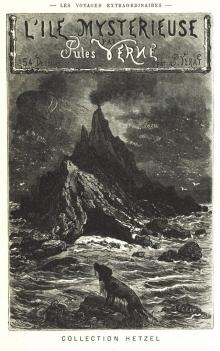 L'île mystérieuse. English
L'île mystérieuse. English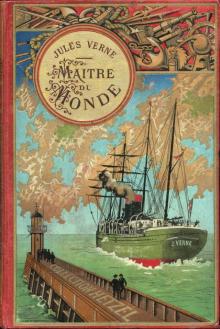 Maître du monde. English
Maître du monde. English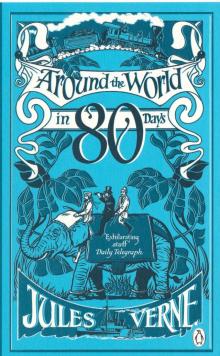 Around the World in Eighty Days
Around the World in Eighty Days A Voyage in a Balloon
A Voyage in a Balloon From the Earth to the Moon, Direct in Ninety-Seven Hours and Twenty Minutes: and a Trip Round It
From the Earth to the Moon, Direct in Ninety-Seven Hours and Twenty Minutes: and a Trip Round It Paris in the Twentieth Century
Paris in the Twentieth Century City in the Sahara - Barsac Mission 02
City in the Sahara - Barsac Mission 02 The English at the North Pole
The English at the North Pole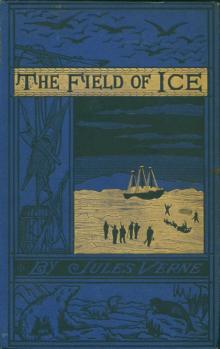 The Field of Ice
The Field of Ice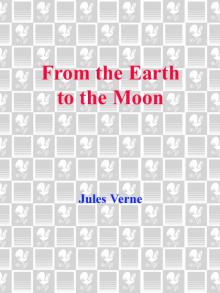 From the Earth to the Moon
From the Earth to the Moon Un capitaine de quinze ans. English
Un capitaine de quinze ans. English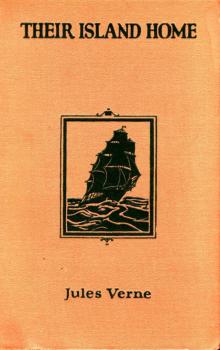 The Mysterious Island
The Mysterious Island Les indes-noirs. English
Les indes-noirs. English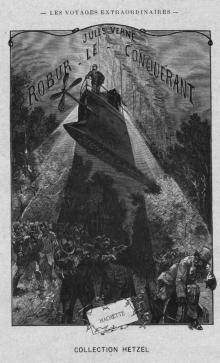 Robur-le-conquerant. English
Robur-le-conquerant. English Propeller Island
Propeller Island Around the World in Eighty Days. Junior Deluxe Edition
Around the World in Eighty Days. Junior Deluxe Edition Les forceurs de blocus. English
Les forceurs de blocus. English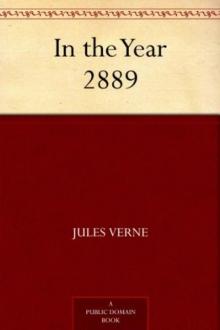 In the Year 2889
In the Year 2889 Journey to the Centre of the Earth
Journey to the Centre of the Earth Twenty Thousand Leagues Under the Sea
Twenty Thousand Leagues Under the Sea From the Earth to the Moon; and, Round the Moon
From the Earth to the Moon; and, Round the Moon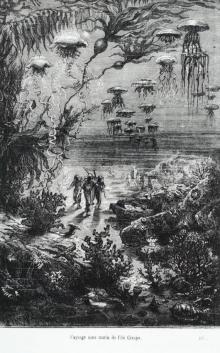 Vingt mille lieues sous les mers. English
Vingt mille lieues sous les mers. English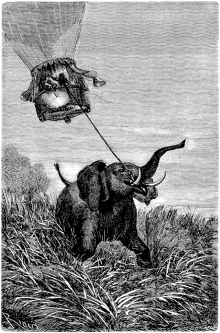 Cinq semaines en ballon. English
Cinq semaines en ballon. English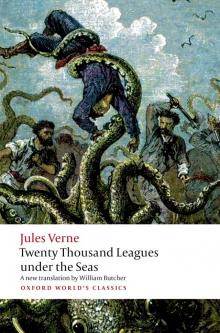 Twenty Thousand Leagues under the Seas
Twenty Thousand Leagues under the Seas Face au drapeau. English
Face au drapeau. English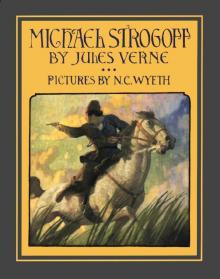 Michael Strogoff; Or, The Courier of the Czar
Michael Strogoff; Or, The Courier of the Czar Un billet de loterie. English
Un billet de loterie. English The Secret of the Island
The Secret of the Island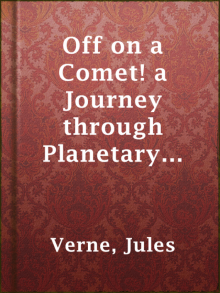 Off on a Comet! a Journey through Planetary Space
Off on a Comet! a Journey through Planetary Space Into the Niger Bend: Barsac Mission, Part 1
Into the Niger Bend: Barsac Mission, Part 1 All Around the Moon
All Around the Moon A Journey to the Center of the Earth - Jules Verne: Annotated
A Journey to the Center of the Earth - Jules Verne: Annotated 20000 Lieues sous les mers Part 2
20000 Lieues sous les mers Part 2 Robur-le-Conquerant
Robur-le-Conquerant Les Index Noires
Les Index Noires Michael Strogoff; or the Courier of the Czar
Michael Strogoff; or the Courier of the Czar 20000 Lieues sous les mers Part 1
20000 Lieues sous les mers Part 1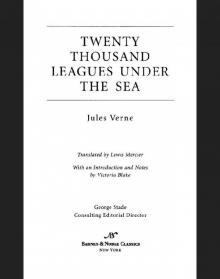 Twenty Thousand Leagues Under the Sea (Barnes & Noble Classics Series)
Twenty Thousand Leagues Under the Sea (Barnes & Noble Classics Series) Five Weeks In A Balloon
Five Weeks In A Balloon Journey to the Center of the Earth
Journey to the Center of the Earth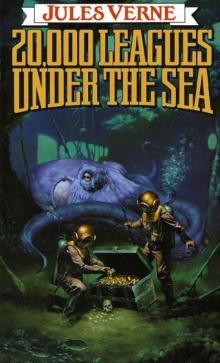 20,000 Leagues Under the Sea
20,000 Leagues Under the Sea Journey to the Center of the Earth (Barnes & Noble Classics Series)
Journey to the Center of the Earth (Barnes & Noble Classics Series) Adrift in the Pacific-Two Years Holiday
Adrift in the Pacific-Two Years Holiday The Collected Works of Jules Verne: 36 Novels and Short Stories (Unexpurgated Edition) (Halcyon Classics)
The Collected Works of Jules Verne: 36 Novels and Short Stories (Unexpurgated Edition) (Halcyon Classics) The Survivors of the Chancellor
The Survivors of the Chancellor Their Island Home
Their Island Home Le Chateau des Carpathes
Le Chateau des Carpathes Les Cinq Cents Millions de la Begum
Les Cinq Cents Millions de la Begum The Floating Island
The Floating Island Cinq Semaines En Ballon
Cinq Semaines En Ballon Autour de la Lune
Autour de la Lune